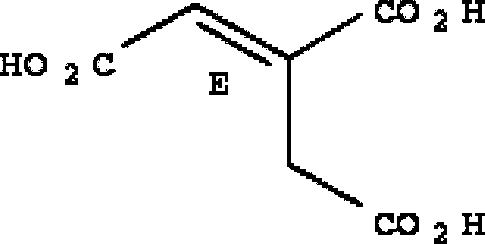Application of trans-aconitic acid in controlling agricultural pests
A technology of trans aconitic acid, molecular formula, used in the field of chemical medicine and biopesticide application
- Summary
- Abstract
- Description
- Claims
- Application Information
AI Technical Summary
Problems solved by technology
Method used
Image
Examples
Embodiment 1
[0023] Example 1: Bioassay of trans-aconitic acid (TAA) on root-knot nematode (Meloidogyne incognita)
[0024] The roots of tomato plants infested by Meloidogyne incognita were collected from the greenhouse of Huazhong Agricultural University in Hongshan District, Wuhan City, Hubei Province, China. The tomato roots were washed with sterile distilled water, and the egg masses of the root-knot nematode were removed from the roots and placed on ice. In a Petri dish, use 1% H in a sterile operating bench 2 o 2 And 0.025% KI disinfection twice, each 15min. Transfer the sterilized egg mass to another sterilized petri dish, then wash it with sterile distilled water 4-5 times for 5 minutes each time, add 20 mL of sterile distilled water, and incubate in a 25°C incubator for 3-5 days.
[0025] The hatched 2nd instar Meloidogyne incognita can be used as the target organism for the bioassay. Bioassays were carried out on a commonly used 96-well plate: about 40 2nd-instar Meloidogyne i...
Embodiment 2
[0029] Example 2: Bioassay of trans-aconitic acid (TAA) on soybean cyst nematode (Heterodera glycine Ichinohe)
[0030] Isolation of cysts by floating method from soil where soybean cyst nematode (Heterodera glycine Ichinohe) is seriously infested, and the cysts were placed in ZnSO 4 Soak in the solution for 24 hours, and after the soybean cyst nematode larvae hatch at room temperature, dilute until there are about 200 2nd instar larvae in every 1ml suspension under microscope inspection, and set aside.
[0031] The hatched 2nd instar soybean cyst nematode (Heterodera glycine Ichinohe) was used as the target organism of the bioassay. Bioassay of virulence was carried out on a commonly used 24-well plate: about 200 2nd-instar soybean cyst nematode (Heteroderaglycine Ichinohe) larvae were inhaled into each well, TAA of known concentration was added (see Table 2 for specific concentration), blank treatment was added, etc. The amount of sterile deionized water, the total volume o...
Embodiment 3
[0035] Embodiment 3: Trans-aconitic acid (TAA) is to the bioassay of sweet potato stem nematode (Ditylenchus destructor)
[0036] Sweet potato stem nematode (Ditylenchus destructor) was preserved by the State Key Laboratory of Agricultural Microbiology, Huazhong Agricultural University. The bioassay of virulence was carried out on a commonly used 24-well plate: about 50 sweet potato stem nematodes (Ditylenchus destructor) were inhaled into each well, TAA with a known concentration was added (see Table 3 for the specific concentration), and an equal amount of sterile detox was added to the blank treatment. Ionized water, the total volume of each hole is 2ml, make up the total volume with sterile deionized water, count the number of dead heads after 3 days, the experimental results are shown in Table 3.
[0037] Table 3. TAA bioassays against sweet potato Ditylenchus destructor
[0038]
[0039] The bioassay results showed that: TAA had a good toxic effect on D. sweetpotato ...
PUM
| Property | Measurement | Unit |
|---|---|---|
| Molecular weight | aaaaa | aaaaa |
Abstract
Description
Claims
Application Information
 Login to View More
Login to View More - R&D
- Intellectual Property
- Life Sciences
- Materials
- Tech Scout
- Unparalleled Data Quality
- Higher Quality Content
- 60% Fewer Hallucinations
Browse by: Latest US Patents, China's latest patents, Technical Efficacy Thesaurus, Application Domain, Technology Topic, Popular Technical Reports.
© 2025 PatSnap. All rights reserved.Legal|Privacy policy|Modern Slavery Act Transparency Statement|Sitemap|About US| Contact US: help@patsnap.com



